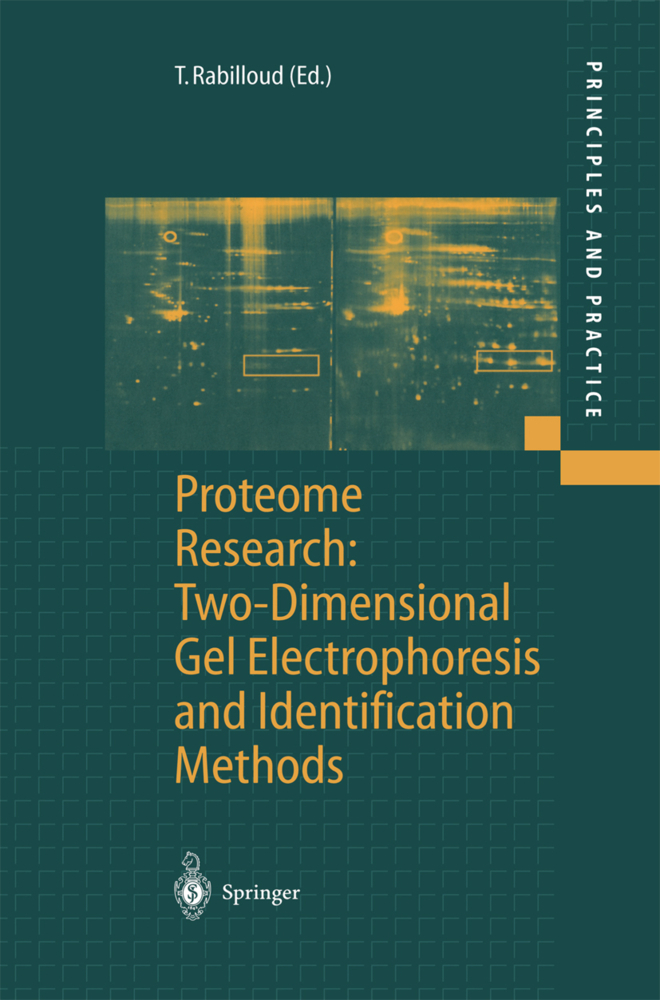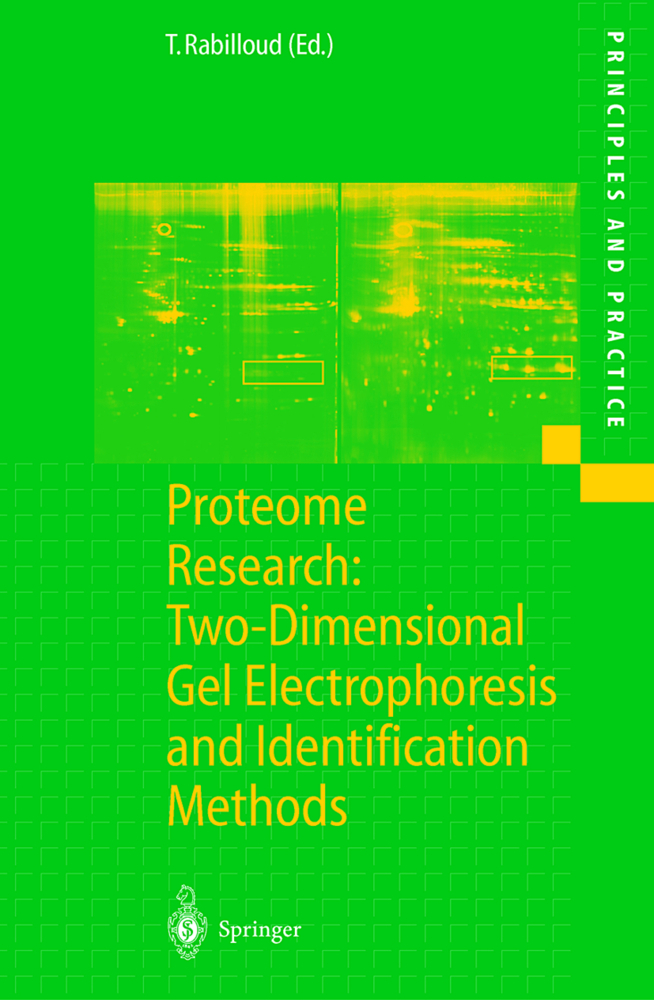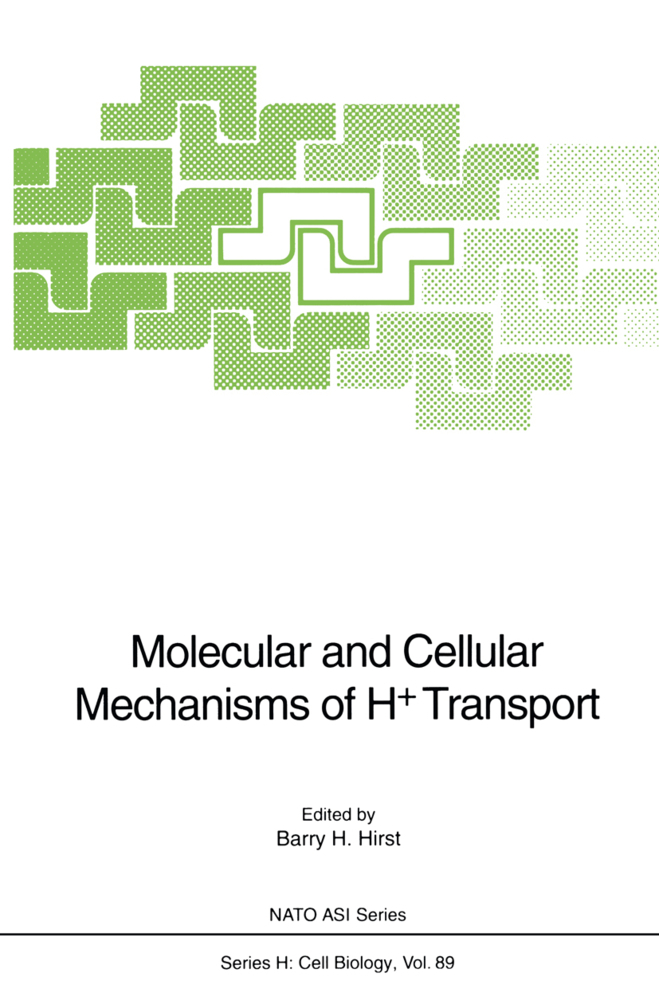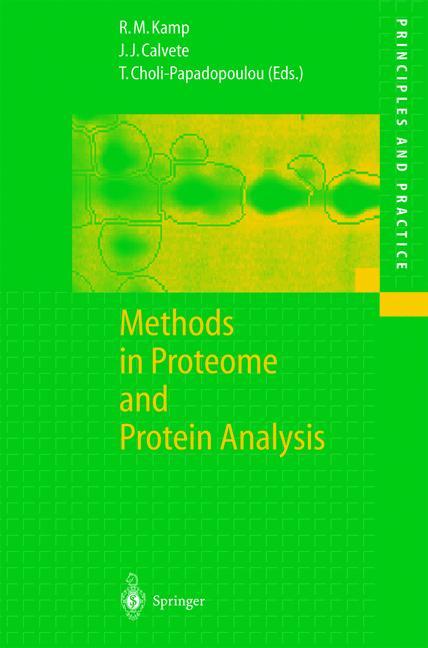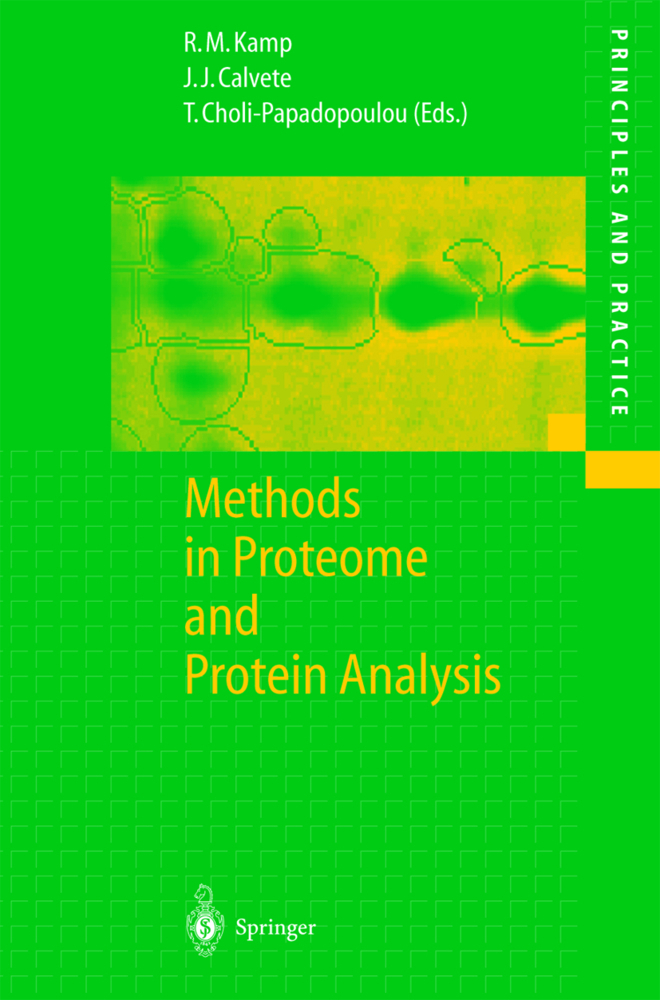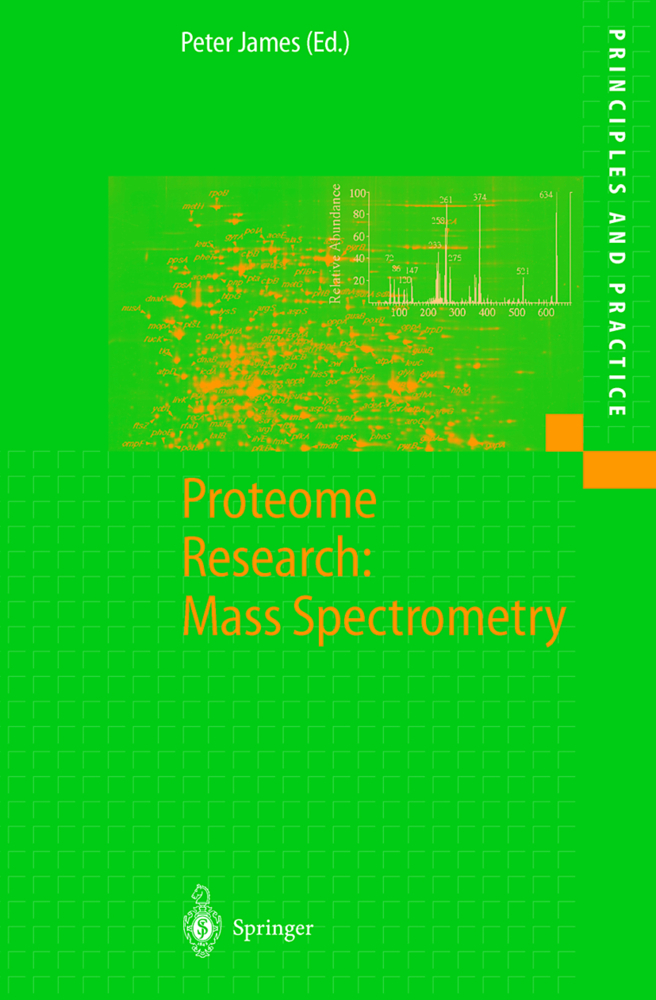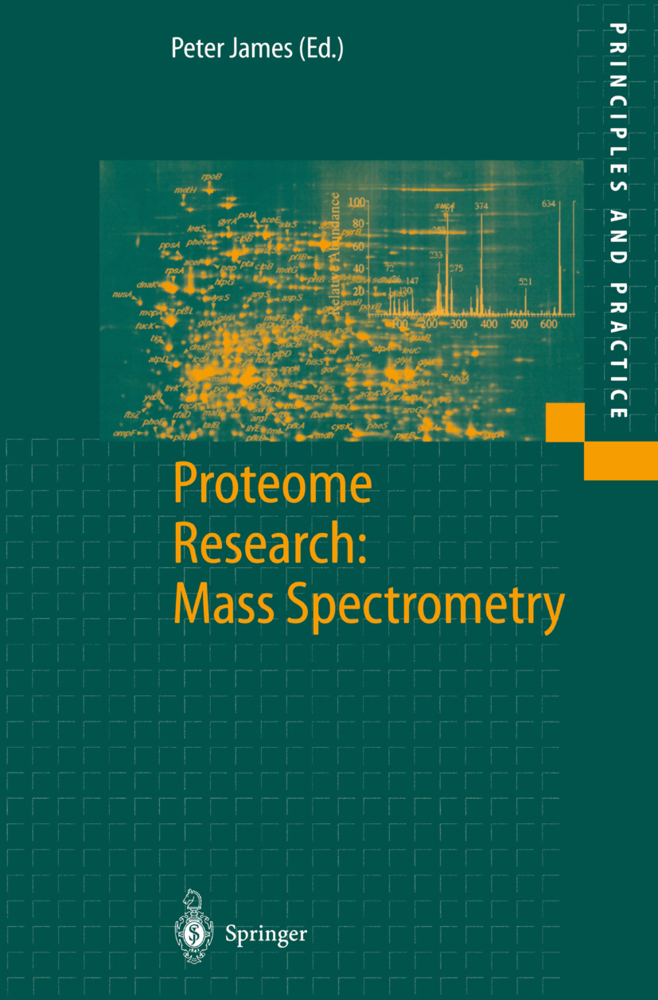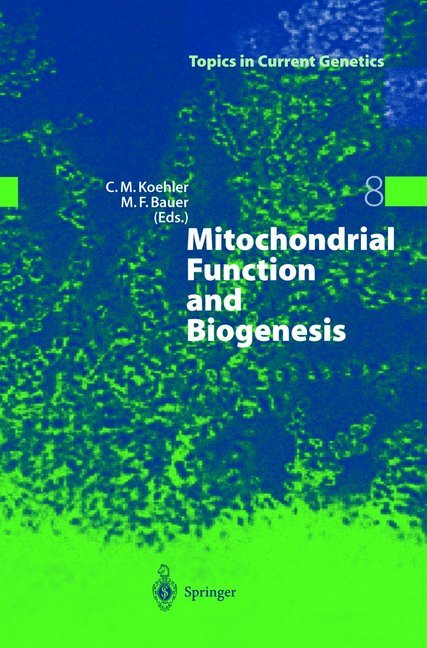Proteome Research: Two-Dimensional Gel Electrophoresis and Identification Methods
Proteome Research: Two-Dimensional Gel Electrophoresis and Identification Methods
Two-dimensional electrophoresis is the central methodology in proteome research, and the state of the art is described in detail in this text, together with extensive coverage of the detection methods available. Sufficient detail is given to allow the readers to apply these technologies to their own particular requirements.
1 Introduction
2 Rationale of Solubilization-Breaking Molecular Interactions
3 Initial Solubilization
4 Solubility During IEF
5 Conclusions: Current Limits and How to Push Them
References
3 Two-Dimensional Electrophoresis with Carrier Ampholytes
1 Introduction
2 Sample Preparation
3 First Dimension. Standard Isoelectric Focusing
4 Second Dimension. Standard Slab Gel Electrophoresis
5 Modification of the Standard Two-Dimensional Gel Method
6 Visualization of Separated Proteins: Silver Staining
References
Appendix: Problems and Troubleshooting
4 Two-Dimensional Electrophoresis with Immobilized pH Gradients
1 Introduction
2 Sample Preparation
3 First Dimension: IEF with IPGs
4 Equilibration of IPG Strips
5 Second Dimension: SDS-PAGE
References
Appendix A: General Troubleshooting
Appendix B: Troubleshooting for IPG and Horizontal PAGE
5 Detection of Proteins on Two-Dimensional Electrophoresis Gels
1 Introduction
2 Detection by Organic Dyes
3 Detection by Differential Precipitation of Salts
4 Detection by Metal Ion Reduction (Silver Staining)
5 Detection by Fluorescence
6 Detection of Radioactive Isotopes
7 Conclusions and Future Prospects
References
6 Blotting and Immunoaffinity Identification of Two-Dimensional Electrophoresis-Separated Proteins
1 Introduction
2 Protein Transfer onto Membranes
3 Membrane Staining
4 Immunodetection
5 Assignment of Two-Dimensional Immunoreactive Spots by Matching
References
7 Identification of Proteins by Amino Acid Composition After Acid Hydrolysis
1 Introduction
2 Blotting of Proteins from Gels to PVDF Membranes
3 Hydrolysis of PVDF-bound Proteins
4 Extraction of Amino Acids from PVDF Membranes
5 Derivatization and Chromatography
6 Amino Acid Analysis Troubleshooting Guide
7 Protein Identification by Database Matching
8 Identification by N-Terminal Sequence Tags and Amino Acid Composition
9 Conclusions
References
8 Identification by Amino Acid Composition Obtained from Labeling
1 Introduction
2 Choice and Labeling Amino Acids
3 Single Labeling Method
4 Double Labeling Method Based on 35S Decay
5 Double Labeling Method using Scintillation Counting
6 Determination of pI and Mr
7 Construction of the Database
8 Search in a Protein Database
9 Result Analysis
10 Conclusion
References
9 Identification of Proteins by Amino Acid Sequencing
1 Purpose of Protein Sequencing
2 N-Terminal Sequence Analysis by Edman Chemistry
3 Other Possibilities for Generation of Amino Acid Sequences
4 The Interface from Two-Dimensional Gel
5 Conclusion
6 Perspectives
References
10 Identification of Proteins by Mass Spectrometry
1 Introduction
2 Protein Preparation Methods Compatible with MS
3 Enzymatic Digestion of Proteins
4 Sample Clean-up for ESI-MS and On-line Liquid Chromatography
5 Sample Clean-up for MALDI-MS
6 Mass Spectrometers
7 Protein Identification by Correlating MS DATA with Sequence Databases
References
11 Mass Spectrometry of Intact Proteins from Two-Dimensional PAGE
1 Introduction
2 Elution of Proteins from Gels for Mass Spectrometry
3 Mass Spectrometry of Proteins Electroblotted onto Polymer Membranes
4 UV-MALDI Mass Spectrometry of Proteins Directly from Polyacrylamide Gels
5 Conclusion
References.
1 Introduction: The Virtue of Proteomics
2 Solubilization of Proteins in 2D Electrophoresis1 Introduction
2 Rationale of Solubilization-Breaking Molecular Interactions
3 Initial Solubilization
4 Solubility During IEF
5 Conclusions: Current Limits and How to Push Them
References
3 Two-Dimensional Electrophoresis with Carrier Ampholytes
1 Introduction
2 Sample Preparation
3 First Dimension. Standard Isoelectric Focusing
4 Second Dimension. Standard Slab Gel Electrophoresis
5 Modification of the Standard Two-Dimensional Gel Method
6 Visualization of Separated Proteins: Silver Staining
References
Appendix: Problems and Troubleshooting
4 Two-Dimensional Electrophoresis with Immobilized pH Gradients
1 Introduction
2 Sample Preparation
3 First Dimension: IEF with IPGs
4 Equilibration of IPG Strips
5 Second Dimension: SDS-PAGE
References
Appendix A: General Troubleshooting
Appendix B: Troubleshooting for IPG and Horizontal PAGE
5 Detection of Proteins on Two-Dimensional Electrophoresis Gels
1 Introduction
2 Detection by Organic Dyes
3 Detection by Differential Precipitation of Salts
4 Detection by Metal Ion Reduction (Silver Staining)
5 Detection by Fluorescence
6 Detection of Radioactive Isotopes
7 Conclusions and Future Prospects
References
6 Blotting and Immunoaffinity Identification of Two-Dimensional Electrophoresis-Separated Proteins
1 Introduction
2 Protein Transfer onto Membranes
3 Membrane Staining
4 Immunodetection
5 Assignment of Two-Dimensional Immunoreactive Spots by Matching
References
7 Identification of Proteins by Amino Acid Composition After Acid Hydrolysis
1 Introduction
2 Blotting of Proteins from Gels to PVDF Membranes
3 Hydrolysis of PVDF-bound Proteins
4 Extraction of Amino Acids from PVDF Membranes
5 Derivatization and Chromatography
6 Amino Acid Analysis Troubleshooting Guide
7 Protein Identification by Database Matching
8 Identification by N-Terminal Sequence Tags and Amino Acid Composition
9 Conclusions
References
8 Identification by Amino Acid Composition Obtained from Labeling
1 Introduction
2 Choice and Labeling Amino Acids
3 Single Labeling Method
4 Double Labeling Method Based on 35S Decay
5 Double Labeling Method using Scintillation Counting
6 Determination of pI and Mr
7 Construction of the Database
8 Search in a Protein Database
9 Result Analysis
10 Conclusion
References
9 Identification of Proteins by Amino Acid Sequencing
1 Purpose of Protein Sequencing
2 N-Terminal Sequence Analysis by Edman Chemistry
3 Other Possibilities for Generation of Amino Acid Sequences
4 The Interface from Two-Dimensional Gel
5 Conclusion
6 Perspectives
References
10 Identification of Proteins by Mass Spectrometry
1 Introduction
2 Protein Preparation Methods Compatible with MS
3 Enzymatic Digestion of Proteins
4 Sample Clean-up for ESI-MS and On-line Liquid Chromatography
5 Sample Clean-up for MALDI-MS
6 Mass Spectrometers
7 Protein Identification by Correlating MS DATA with Sequence Databases
References
11 Mass Spectrometry of Intact Proteins from Two-Dimensional PAGE
1 Introduction
2 Elution of Proteins from Gels for Mass Spectrometry
3 Mass Spectrometry of Proteins Electroblotted onto Polymer Membranes
4 UV-MALDI Mass Spectrometry of Proteins Directly from Polyacrylamide Gels
5 Conclusion
References.
Rabilloud, T.
| ISBN | 978-3-540-65689-0 |
|---|---|
| Medientyp | Buch |
| Copyrightjahr | 1999 |
| Verlag | Springer, Berlin |
| Umfang | XVI, 248 Seiten |
| Sprache | Englisch |

